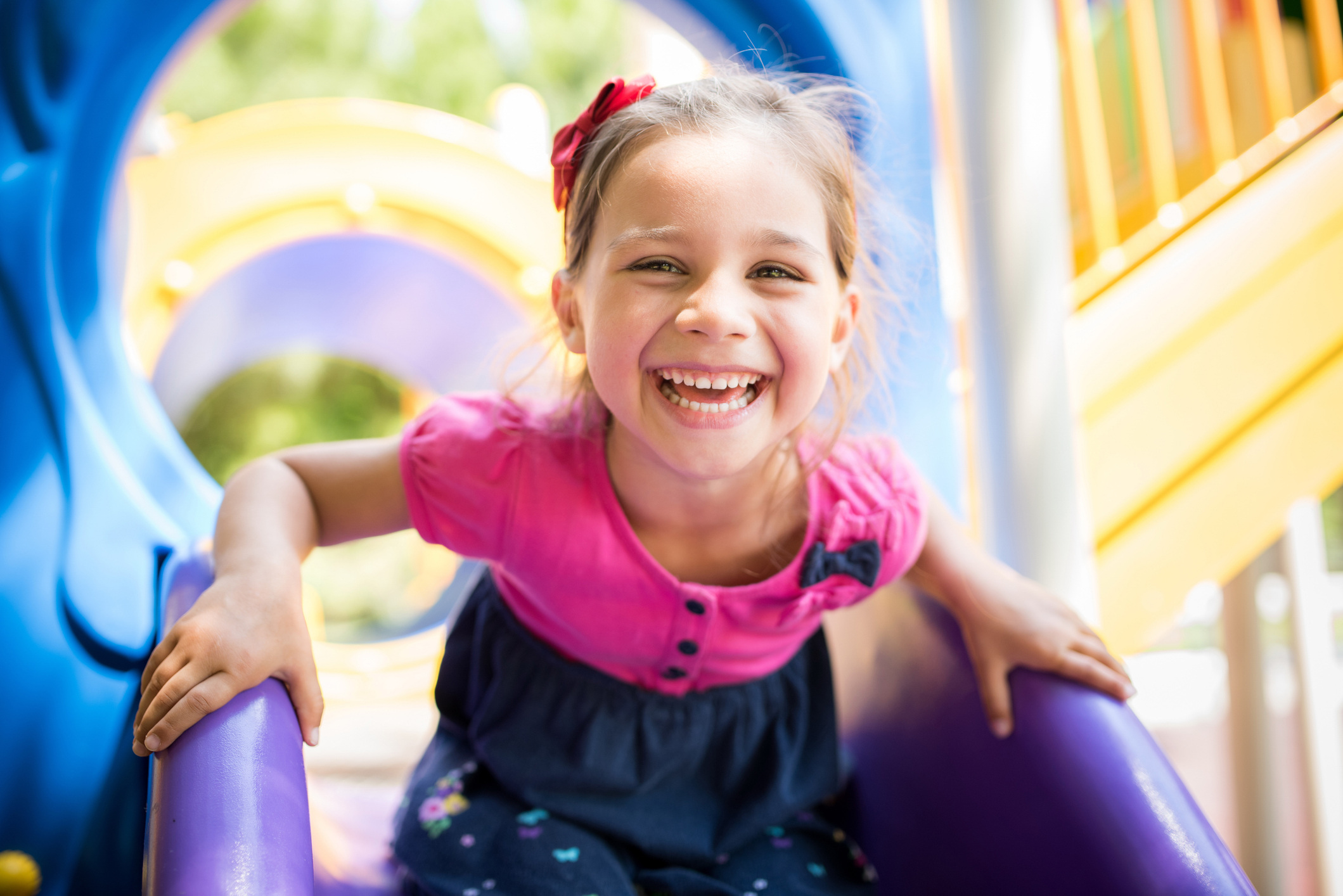Maximizing Small Spaces: Tips for Planning an Outdoor Playground
Posted by May Recreation Content Team on

When it comes to designing your outdoor playground, a lack of physical space may seem like a stumbling block, but creative design and thoughtful utilization of available area can result in a successful project that benefits your community.
“Playgrounds provide fun spaces for children to play, engage their imaginations and release pent-up energy. The goal of designing a play area for kids is to create a fun and engaging environment that caters to different play interests,” advises Miracle Recreation. “However, you may be limited on space and only have a small park or schoolyard to build your playground. The situation can come with a few challenges, but you can overcome them with the right strategies and a bit of creativity.”
Indeed, creating an engaging outdoor playground doesn't always require vast expanses of land. With clever planning and innovative design, even small spaces can be transformed into exciting play areas that foster children's development and imagination.
At May Recreation Equipment & Design, we specialize in bringing playground dreams to life, no matter what the size constraints. Here are some expert tips for maximizing small spaces when planning an outdoor playground.
Assess Your Space and Set Goals
Before diving into design, it's crucial to thoroughly evaluate your available area.
Measure the dimensions accurately and note any existing features or obstacles.
Consider factors such as sunlight exposure, drainage, and accessibility.
Once you have a clear understanding of your space, define your goals for the playground. You should answer questions such as:
- Are you catering to a specific age group?
- How many children do you expect to use the playground simultaneously?
- Are there any specific accessibility requirements that need to be met?
- Do you want to focus on physical activity, educational play, or a combination of both?
- Are there any existing features or obstacles that need to be worked around?
- What is the budget for both initial construction and ongoing maintenance?
- What type of surfacing would be most appropriate for the space and budget?
- Are utilities (water, electricity) available or needed for the playground area?
- Is there a need for additional amenities like seating, shade structures, or restrooms?
Setting clear objectives will guide your design decisions and help you make the most of your limited space.
Optimize Layout with Strategic Zoning
Efficient use of space is paramount when working with small areas. Divide your playground into distinct zones to maximize functionality:
- Active Play Zone: Dedicate space for physical activities and equipment that promotes movement.
- Quiet Play Zone: Create areas for calmer activities like reading or sensory play.
- Social Play Zone: Include spaces that encourage interaction and group play.
By clearly defining these zones, you can ensure a well-rounded play experience without overcrowding the area.
Miracle Recreation also says to keep in mind oddly shaped spaces, which can be used as smaller secret spaces or tranquility corners, and to use nature to your advantage, incorporating the landscape into the design.
Choose Space-Efficient Equipment
Selecting the right equipment is crucial for small playgrounds. Choose versatile, compact structures that offer multiple play activities in a single unit.
“The play structures should fit in the play space that’s available without overcrowding or obstructing other elements. There should be enough room for kids — and supervising adults — to move around between different structures,” says Miracle Recreation.
At May Recreation, we offer a wide range of space-efficient options designed to maximize play value in limited areas. Consider these ideas:
- Multi-level play structures with slides, climbers, and interactive panels.
- Vertical climbing walls or nets.
- Overhead equipment like monkey bars or suspended bridges.
- Compact versions of classic playground elements (e.g., mini swings or see-saws).
Remember to choose equipment appropriate for your target age group and ensure it meets all safety standards.
Utilize Vertical Space
When ground space is at a premium, think vertically.
“One of the best ways to improve space efficiency is to pick vertical structures,” says Miracle Recreation.
Incorporating vertical elements not only saves space but also adds an exciting dimension to play:
- Maximize vertical space with ropes, nets, and ladders.
- Install tall climbing structures or towers.
- Use wall-mounted play panels or activity boards.
- Incorporate overhead elements like shade structures.
Vertical play encourages physical development and provides unique vantage points for children to explore their environment.
Incorporate Multi-Functional Elements
Look for playground equipment that serves multiple purposes to maximize play value in a small footprint. For example:
- A play structure with built-in seating or storage.
- Climbing walls that double as room dividers.
- Benches that also serve as planters.
- Equipment with interchangeable parts for varied play experiences.
At May Recreation, we can help you select or design custom multi-functional elements that perfectly fit your space and play goals.
Create Designated Activity Areas
Even in small spaces, it's important to provide a variety of play experiences. Create microsites or activity stations throughout the playground:
- Sensory play areas with textured surfaces, musical elements, water features, and sound-making installations.
- Nature exploration zones with plants or small gardens.
- Art stations with weatherproof drawing surfaces.
- Imaginative play areas such as cozy reading nooks or pretend playhouses.
These designated areas add depth to the play experience without requiring large amounts of space.
Use Creative Surfacing Solutions
The right surfacing can significantly impact both safety and aesthetics in a small playground.
Consider these options:
- Poured-in-place rubber surfacing for a seamless, low-maintenance solution.
- Interlocking rubber tiles in vibrant colors to define play zones.
- A combination of materials to create visual interest and varied textures.
Our team at May Recreation can guide you through surfacing options that meet safety standards while enhancing your playground's overall design. Remember, surfacing solutions can help with:
- Injury Prevention: Your surface should serve as fall protection and offer good shock absorption to protect children’s bodies.
- Accessibility: Smooth and even surfaces are a must for inclusive play and allowing all children to participate.
- Durability and Weather Resistance: Your surface needs to withstand year-round weather conditions and stand up to rain, snow, or extreme heat, depending on your location.
- Comfort and Playability: The right surface can enhance play experience and encourage children to spend more time playing and exploring.
- Maintenance and Cost-Effectiveness: Choose the right surface that requires minimal maintenance to reduce long-term costs.
Maximize Natural Elements
It’s important to make the most of what your playground area offers.
Incorporating nature into your playground design adds beauty and promotes environmental awareness:
- Use existing trees for shade or as part of climbing structures.
- Existing shrubs and trees can provide a visual interest as well as attracting wildlife.
- Create small gardens or planting areas for hands-on learning.
- Incorporate natural elements like logs or boulders as play features.
- Use existing terrain such as hills, slopes, and valleys to create opportunities for climbing, sliding, and exploring.
These additions can make a small space feel more expansive and provide unique play opportunities.
Ensure Safety and Accessibility
Safety should always be a top priority, especially in compact play areas:
- Maintain clear sightlines for easy supervision
- Ensure adequate fall zones around equipment
- Provide accessible routes and inclusive play options for children of all abilities4
Our experienced team at May Recreation can help ensure your playground meets all safety and accessibility standards.
Involve the Community
Engaging with the local community can provide valuable insights and foster a sense of ownership:
- Seek input from parents, educators, and children.
- Consider the specific needs of your community.
- Involve local artists or craftspeople in creating custom elements.
Community involvement often leads to more creative and well-utilized play spaces.
“Creativity is key, and your community may be able to help with other concepts for the play space. Consider asking community families who will use the space what they’d like to see — their input could spark a few additional approaches you can use to create a playground in a small area that everyone loves,” says Miracle Recreation.
Partner with May Recreation to Turn Your Small Space into a Big Impact
Creating an engaging outdoor playground in a small space is entirely possible with thoughtful planning and innovative design. By optimizing layout, choosing space-efficient equipment, and incorporating multi-functional elements, you can create a rich play environment that fosters children's development and imagination.
At May Recreation Equipment & Design, we bring over 25 years of experience in playground design and installation to every project. Our team of experts understands the unique challenges of creating playgrounds in the greater Houston area and East Texas.
We're committed to providing high-quality, competitively priced products that meet the highest standards of safety and fun.
Whether you're planning a playground for a park, school, community center, or any other space in the Houston area, we're here to make your playground a reality. Contact May Recreation today to find out how you can maximize your small space to create a big impact on children's play and development.
